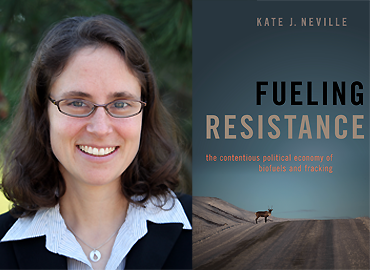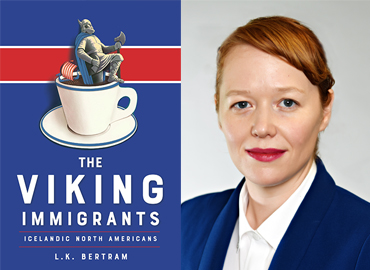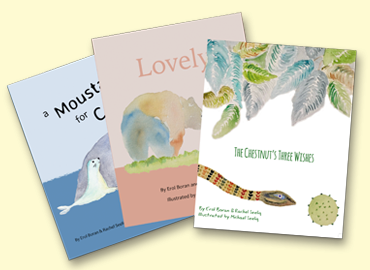From award-winning and short-listed works of non-fiction, to scholarly and literary inquiry and analysis, to critically acclaimed fiction, the A&S bookshelf added many new volumes this year. Here are just a few of the titles.
Celebrating a mother’s courageous tale of challenging autism’s roots
 Did you know that in the 1960s, psychiatrists and psychologists believed autism was caused by unloving mothers? They believed their lack of affection pushed children into this condition. As a result, Massachusetts homemaker Clara Park was blamed for her three-year-old daughter Jessica’s disability.” She was labelled a “refrigerator mother” — a cold parent starving Jessica of the natural affection needed to develop properly.
Did you know that in the 1960s, psychiatrists and psychologists believed autism was caused by unloving mothers? They believed their lack of affection pushed children into this condition. As a result, Massachusetts homemaker Clara Park was blamed for her three-year-old daughter Jessica’s disability.” She was labelled a “refrigerator mother” — a cold parent starving Jessica of the natural affection needed to develop properly.
But Park dared to tell the psychiatric community they were wrong. Marga Vicedo, a professor in Institute for the History and Philosophy of Science & Technology, captures Park’s courageous story in her book, Intelligent Love: The Story of Clara Park, Her Autistic Daughter and the Myth of the Refrigerator Mother.
Tall trees and taller tales — poetry that fuses Greek history with colonialism
 There’s a road sign in northern Washington State that reads “Entering Sappho,” a small logging village that emerged in 1895 and died by the end of the twentieth century. Taking a photo beside the sign is somewhat of a pilgrimage for those who identify as queer, paying homage to the famous Greek poet from the island of Lesbos.
There’s a road sign in northern Washington State that reads “Entering Sappho,” a small logging village that emerged in 1895 and died by the end of the twentieth century. Taking a photo beside the sign is somewhat of a pilgrimage for those who identify as queer, paying homage to the famous Greek poet from the island of Lesbos.
For Sarah Dowling, an assistant professor at the Centre for Comparative Literature, that sign and the stories behind the small forgotten town became the inspiration for her collection of poetry, also called Entering Sappho. Diving into the town’s historical archives, newspaper clippings and little-known memoirs from its residents, Dowling brings Sappho the poet together with Sappho the town in order to think about history and the broader phenomenon of settler colonialism in a different way.
Renewable energy politics knows no borders
 It’s likely one of the few books that compares the Yukon to Kenya. For Kate Neville, an assistant professor, cross-appointed to the Department of Political Science and the School of the Environment, the similarities between the two regions are undeniable when examining energy politics and the challenges in adopting renewable or lower-carbon energy projects.
It’s likely one of the few books that compares the Yukon to Kenya. For Kate Neville, an assistant professor, cross-appointed to the Department of Political Science and the School of the Environment, the similarities between the two regions are undeniable when examining energy politics and the challenges in adopting renewable or lower-carbon energy projects.
Her first book, Fueling Resistance: The Contentious Political Economy of Biofuels and Fracking examines proposals in East Africa for liquid biofuels (derived from plants and plant oils) and in Northern Canada for fracking — a process where water, sand and chemicals are injected underground at high pressures to crack open rock layers and release oil or gas trapped inside. Though vastly different energy projects in very different places, the economics and politics of these projects are surprisingly similar.
North America or bust — the little-known Icelandic invasion of the 19th century
 Because of food shortages, climate shifts, and poverty, almost one-quarter of Iceland’s population migrated to North America between 1870 and 1914, forming small Icelandic communities in the United States and Canada. Fascinated by this migration, and her own Icelandic heritage, L.K. Bertram, an associate professor in the Department of History, wrote The Viking Immigrants: Icelandic North Americans.
Because of food shortages, climate shifts, and poverty, almost one-quarter of Iceland’s population migrated to North America between 1870 and 1914, forming small Icelandic communities in the United States and Canada. Fascinated by this migration, and her own Icelandic heritage, L.K. Bertram, an associate professor in the Department of History, wrote The Viking Immigrants: Icelandic North Americans.
Through rare photographs, interviews, artifacts and generations-old recipes, Bertram maps the transformation and evolution of Icelandic North American culture over a century and a half. That includes the story of her own family which arrived and helped form an Icelandic colony along the west shore of Lake Winnipeg, and an Icelandic immigrant neighbourhood in the city of Winnipeg in the late 19th century.
Co2 given some much-needed love and praise as a possible climate crisis solution
 CO2 often gets a bad rap. Geoffrey Ozin, professor in the Department of Chemistry, was reminded of this when his grandson described CO2 as “a bad molecule that is causing our planet to get hotter.” That image inspired Ozin to tell the story of CO2 with co-author Mireille Ghoussoub in his book, The Story of CO2: Big Ideas for a Small Molecule.
CO2 often gets a bad rap. Geoffrey Ozin, professor in the Department of Chemistry, was reminded of this when his grandson described CO2 as “a bad molecule that is causing our planet to get hotter.” That image inspired Ozin to tell the story of CO2 with co-author Mireille Ghoussoub in his book, The Story of CO2: Big Ideas for a Small Molecule.
The book offers a natural history of the molecule from the creation of the universe to today. As well, Ozin and Ghoussoub urge reducing levels of the gas in our atmosphere by doing more than decreasing emissions or converting to renewable energy sources. They believe CO2 levels can also be reduced by looking at the gas as a resource that can be transformed into products such as plastics, pharmaceuticals and polymers.
A new children’s book label born out of a love of storytelling paired with parental frustration
 Erol Boran and his partner Rachel Seelig sometimes found reading children’s books to their son difficult. Some were too long, others didn’t flow, others still had illustrations that didn’t match the text. So Boran, an associate professor in the Department of Germanic Languages & Literatures, and Seelig, a literary scholar and lecturer, launched their own children’s book imprint called Lovely Books.
Erol Boran and his partner Rachel Seelig sometimes found reading children’s books to their son difficult. Some were too long, others didn’t flow, others still had illustrations that didn’t match the text. So Boran, an associate professor in the Department of Germanic Languages & Literatures, and Seelig, a literary scholar and lecturer, launched their own children’s book imprint called Lovely Books.
Their label now has three books. Their latest The Chestnut’s Three Wishes, published in August, is a story about a chestnut that falls from a tree and is helped by forest animals and given shade, water and a safe place to grow. That story originated from their son’s fascination with the chestnut tree outside their home. All three books are illustrated by Seelig’s father, Michael Seelig, who happens to be an artist and provides watercolour paintings.
A&S faculty members publish prolifically and are all actively engaged in the creation of knowledge in their respective disciplines. From scholarly work on the cutting edge of historical, cultural and social issues, to politics, the social sciences and scientific inquiry — their work contributes to our understanding of our communities and the world. Beyond the academy, faculty members — in addition to many of our alumni — publish innovative and award-winning fiction, poetry, and in other creative genres.
Explore more 2021 titles from A&S authors.

